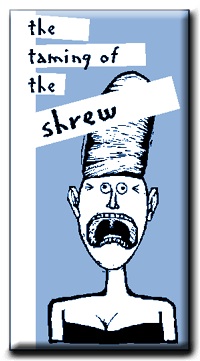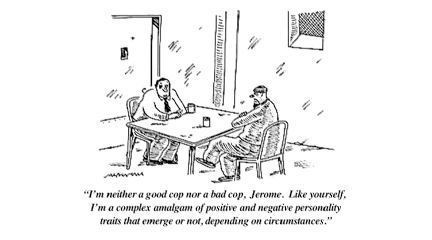Click here for scripts.
Scenes from the American Conservatory Theater production. Watch them all (for exam purposes). Watch extra carefully the one you are performing.
Taming Scene (Goodmorrow, Kate)

Click here for scripts.
Scenes from the American Conservatory Theater production. Watch them all (for exam purposes). Watch extra carefully the one you are performing.
Taming Scene (Goodmorrow, Kate)

Comments Off on Shrew Scenes: videos and scripts
Posted in 1
This is the link
Best to open it in FIREFOX.
Name in ALL CAPS is your first initial + the first 4 letters of your last name. Example, Anna = ATAGL and Eric = EFARN
Password is the one you use to log in on a daily basis.
You’ll remember the drill. There are two tests, same as before.
Logout, if needed
Comments Off on Gotta take that Star reading test again.
Here’s a PDF of the quote-based paper assignment, in case you lost yours or were absent when I handed it out.
NOTE: if you choose to do the Pig Hunt paper, the highest grade you can receive is a B, given that the page numbers are all picked out for you and we discussed that in depth in class.
Comments Off on Lord of the Flies: The Paper
 Know yourself as a reader. If reading while listening would help you absorb this book better, please go to the Lord of the Flies Page on this site so you can hear it in iTunes while you read. You will need to ask me for the password.
Know yourself as a reader. If reading while listening would help you absorb this book better, please go to the Lord of the Flies Page on this site so you can hear it in iTunes while you read. You will need to ask me for the password.
Also on that page is a tool to help you search the text. This will be useful as you take notes on the book for a 4th quarter paper.
Finally, extra notetaking sheets available as a pdf here.
Comments Off on Lord of the Flies, two ways
Posted in 1

Here’s a link to Philip Zimbardo’s TED talk on the psychology of evil.
And here’s some quotes from that talk:
There are seven social processes that grease the slippery slope of evil:
“Power without oversight is prescription for abuse”
“They paint themselves like Lord of the Flies… and that’s the power of anonymity.”
“All evil starts with 15 volts.”
That whole TED conference was called “Will Evil Prevail.” There are notes for it if you want to read about the whole thing, and you can find all the talks at the TED site.
Comments Off on The Psychology of Evil
Posted in 1
(due April 4th and 5th)
In the spirit of I-Search, you have a choice of 3 books to read, each of which is kind of a book-length I-Search paper. That is, a reporter set out to investigate a subject by interviews and background reading, and produced from that information an influential book.
Comments Off on I-Search Outside Reading
 Much of what you’ll need is in a Noteshare Notebook, which you can download here.
Much of what you’ll need is in a Noteshare Notebook, which you can download here.
Snow seems to be an issue in 2011. Don’t forget to check my Google calendar to keep track of the ever-changing blue and red dates and to see if weather has caused any deadline shifts.
Comments Off on I-Search
You will get a PILE of I-Search materials once the new semester begins, but here are the instructions for writing Part One, which will be due the SECOND CLASS MEETING of the new semester, so that, when we start researching, you’ve already thought about what you want to research.
Writing the I-Search: Part One
You should start writing Part One of the I-Search. (Before you do, it might be a good idea to speak with me or email me, so that I could help you think about whether your topic will work as an I-Search paper). Here’s what it should cover, in no particular order:
1. As complete a description of your topic as you can make at this point, including
2. An account of your present state of knowledge and thinking on your topic, including
3. An account of your personal and intellectual connection to the topic, including
4. A note with the signature of a parent or guardian, indicating that they have read your draft & approve of your topic.
Naturally some of you will have more to write in part one, depending on how much you already know and have experienced with this topic. But no one should have a problem meeting the minimum word length. If you do, you just haven’t given enough reflection yet to what you expect to learn from your research and why you find it interesting and important.
One purpose of part one is to insure that you’ve done some real thinking about your topic before you get very deep into your research. Another is to give you something to measure your success against when you’re all through: did you accomplish what you set out to do? But research often takes us in strange directions, so don’t be alarmed if you find you’ve moved away from your original intentions as you’ve gotten further into your subject.
Must be typed and proofread; minimum 200 words.
Comments Off on Writing the I-Search, Part One

Learn to use ’em well!
Here’s a link to download the keynote presentation. Open it with Keynote.
Added: 2 pdfs to review quote sandwiches and help you make ’em with words instead of video clips. Both taken from our assignment on 12 Angry Men: Quote Sandwiches: a graphic description and Quote sandwiches in 12 Angry Men
The play script we read is here, so you can get print quotes for sandwiches, too.
Comments Off on Quote sandwiches
 Along with our in-class essay test on The Curious Incident of the Dog in the Night-time, you will have a choice of 3 projects. Choose one.
Along with our in-class essay test on The Curious Incident of the Dog in the Night-time, you will have a choice of 3 projects. Choose one.
More details below. Due before Christmas break.
Comments Off on Curious Incident of the Curious Projects